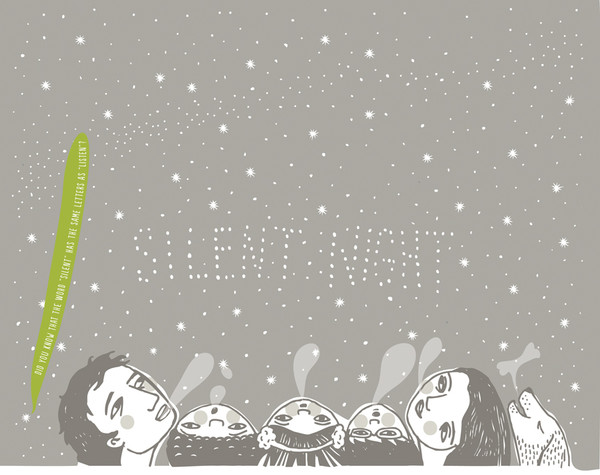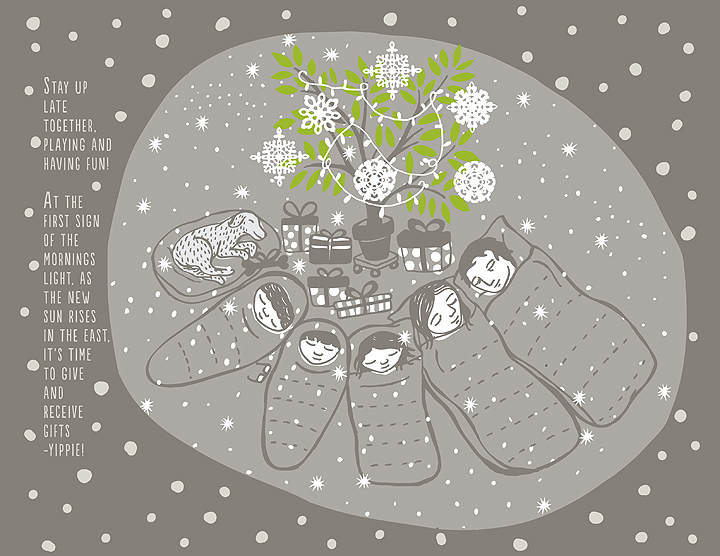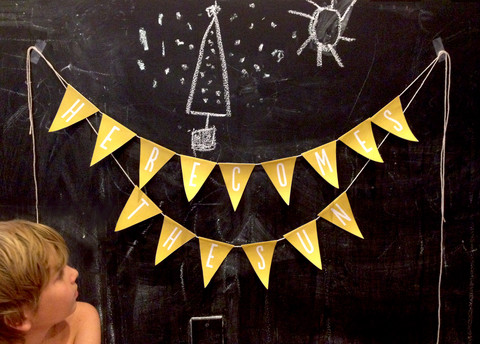 My guest today is Teresa Villegas, author of How to Celebrate Winter Solstice. I’ve been celebrating Winter Solstice since 1987, when my discovery of toxic chemicals in consumer products lead me to search for a celebration beyond
My guest today is Teresa Villegas, author of How to Celebrate Winter Solstice. I’ve been celebrating Winter Solstice since 1987, when my discovery of toxic chemicals in consumer products lead me to search for a celebration beyond 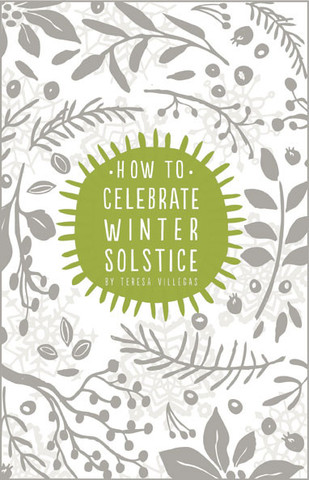 toxic consumer gift exchange. I did learn that I could give gifts made from toxic free materials, but in the process found in Winter Solstice a celebration of reconnection with Nature and intention for the coming year. Teresa shares my viewpoint that Winter Solstice can be a celebration for everyone—of every religion and viewpoint—because it’s a celebration of the return of the light of the Sun that supports all life on Earth. Join us as we talk about what Winter Solstice means to each of us, why and ways we celebrate, and how you can celebrate Winter Solstice too. www.heartandmindpress.com
toxic consumer gift exchange. I did learn that I could give gifts made from toxic free materials, but in the process found in Winter Solstice a celebration of reconnection with Nature and intention for the coming year. Teresa shares my viewpoint that Winter Solstice can be a celebration for everyone—of every religion and viewpoint—because it’s a celebration of the return of the light of the Sun that supports all life on Earth. Join us as we talk about what Winter Solstice means to each of us, why and ways we celebrate, and how you can celebrate Winter Solstice too. www.heartandmindpress.com
Another book Teresa likes, and I like too, is How To Celebrate The WInter Solstice: A Rational Approach to Celebrating the Season Without Religion by Thomas Harrop.
Audio Player
Solstice Cake
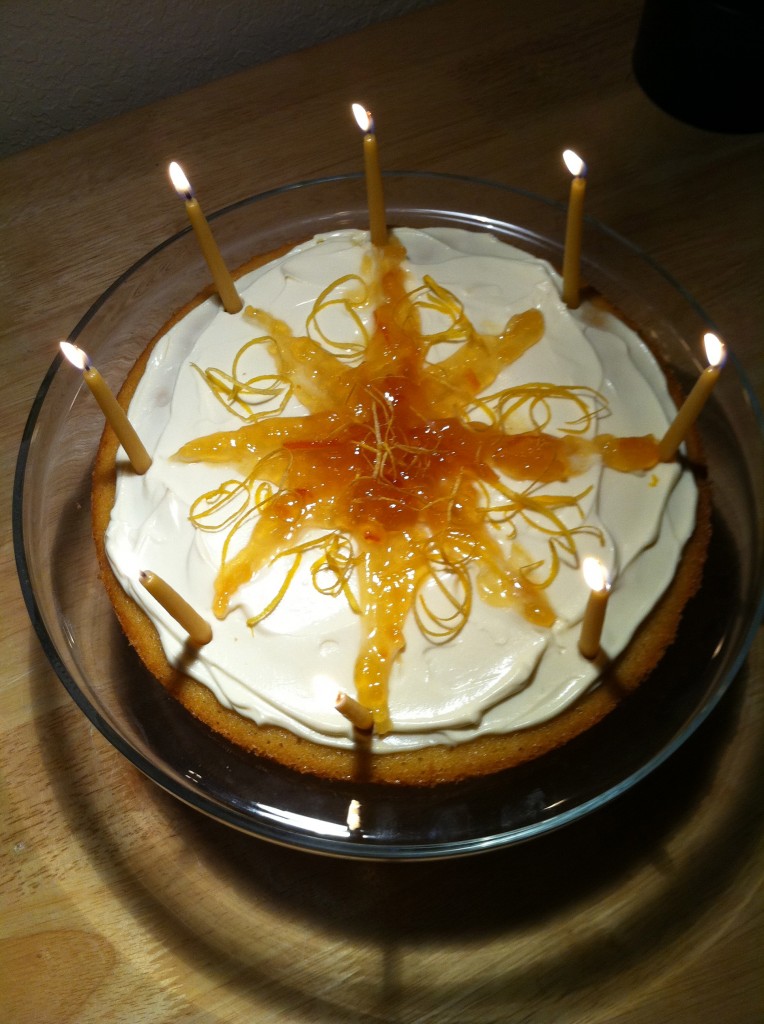
I have two girlfriends with whom I celebrate the solstices and equinoxes. We usually get together and eat seasonal foods, some from our gardens depending on time of year, and we do various things appropriate to celebrating the season.
This year we had our gathering on Solstice eve, the night before Solstice. Linda read something about having a birthday party for the Sun, to bake a cake with an image of a Sun on it, and sing Happy Birthday to welcome the rebirth of the Sun in the new year. She asked me to bake and decorate a cake for the occasion.
I thought about this cake for days in advance and considered many different options. What cake to bake? How do I get an image of the sun on top? I considered using yellow icing to pipe or paint a sun, and creating a sun with careful placement of golden raisins. But everything I thought of didn’t seem quite right.
Then on the very day that the cake was needed, the perfect cake just came to me. I knew exactly what to do, what elements to bring together that would be exactly right in every way. I made a gluten-free almond cake, topped it with mascarpone cheese* instead of sugary frosting, then “painted” a sun on top with ginger-orange marmalade fruit spread (sweetened with grape juice concentrate). The translucent marmalade caught the light and made the Sun “shine”. For a final festive garnish, I sprinkled the top with curls of lemon zest, from a lemon I picked off the tree in my backyard. I gave the Sun eight points with a beeswax candle at each point to represent infinity and the infinite continuation of the return of the Sun year after year.
It was a truly stunningly beautiful cake, and amazingly delicious too. With the fresh lemon zest, the cake just smelled like winter in Florida, where citrus trees are everywhere, in almost every backyard.
I was happy that this cake captured the spirit of the Solstice, in the place where I live. Everyone loved it.
Here’s the recipe for my cake.
SOLSTICE CAKE
makes one 9-inch layer, 8 servings
- 6 tablespoons butter, at room temperature
- 3/4 cup sifted powdered unrefined cane sugar (sold as “organic” powdered sugar)
- 4 large eggs
- 1 teaspoon almond extract
- 1 1/2 cups almond flour (or almonds processed to a fine powder)
- 1/4 teaspoon salt
- 8 ounces mascarpone cheese, at room temperature
- 1/2 jar ginger-orange marmalade fruit spread (or plain orange marmalade)
the zest of one lemon
- Preheat the oven to 325 degrees F.
- Line a 9-inch round cake pan with a piece of parchment paper.
- Whip butter in a large bowl with an electric mixer until smooth and creamy, then add powdered sugar and continue to beat until well incorporated.
- Add the eggs, one at a time, beating and scraping the sides of the bowl after each addition.
- Add the almond extract.
- Stir the almond flour into the batter along with the salt.
- Pour batter into the pan and bake 35 to 40 minutes, or until the cake is lightly browned on top and a toothpick inserted into the center comes out clean.
- Let the cake cool in the pan for 10 minutes.
- Invert cake onto a cooling rack and allow it to cool completely.
- Spread the soft mascarpone cheese onto the cooled cake. Then put the cake in the refrigerator for about an hour to allow the mascarpone to firm up.
- To make the sun, put a heaping tablespoon of marmalade in the center of the cake. Then fill a teaspoon with marmalade. Starting from the center circle, place the marmalage in the teaspoon on the cake, and pull the marmalage out towards the edge, making the sunbeam narrower and narrower as you go. I starting pulling with the back of a teaspoon and then tipped the spoon as I want to make the line narrower.
- Top with lemon zest curls and a candle at each point.
* Mascaropone is a soft Italian cheese similar to our cream cheese but more delicate. It is usually sold in gourmet supermarkets and natural food stores, or in the speciality cheese section of supermarkets. If you can’t find it where you live, you can use whipped cream cheese or buttercream frosting.
_____________________________________________________________________________________
Sunshine Through the Year
I “accidentally” found this very cool website a couple of years ago and it’s one of my favorites.
Gaisma.com has very comprehensive data about the amount of sunshine for every place in the world. “Gaisma” is a Latvian word, meaning “light”.
Why would you want to know this? For gardening, for calculating potential solar energy, but for me, it very clearly shows the increase and decrease of day length (making it easy to find the longest days and longest nights), in beautiful graphs.
Here is my graph for Clearwater, Florida, for today, 5 January 2013.

Today is the day after the Summer Solstice, the so-called “longest day”. See, the day length is 13 hours 55 minutes. But tomorrow is 13 hours 55 minutes also, and if you could scroll this back, you would see that the prior three days were 13 hours 55 minutes. It takes a week here for the daylight to be one minute less.
Then this information is placed on a beautiful graph that shows the hours of sunlight over the course of the year. There’s a grey line near the middle that is today.
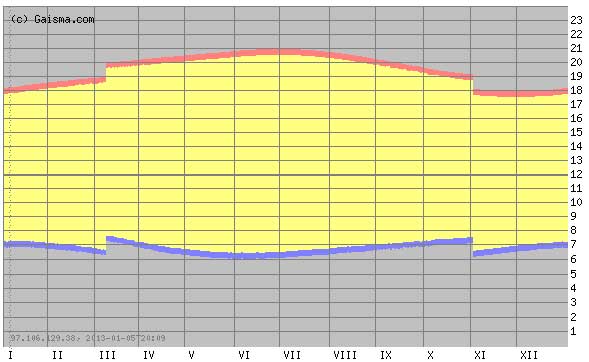
Then there is the sun path diagram. The sun path is the seasonal-and-hourly positional changes of the sun as the Earth rotates and orbits around the sun, so you can see where the sun will be at different times of year. This is useful to orient a house or garden to the sun. You can print your sun path diagram on an overhead transparency or tracing paper and overlay it on your house or garden plans.
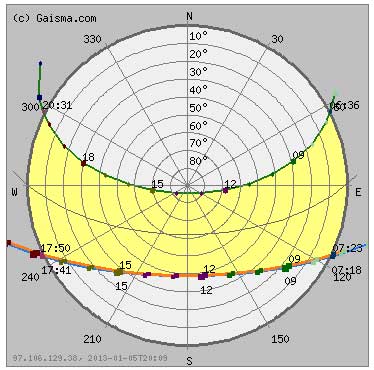
In addition there is all kinds of meteoroligical information for your place like temperature, wind speed, and precipitation. And if you don’t know where you are in the world, it tells your longitude and latitude, too, local time zone and even your altitude.
It’s a great tool to play with. I had fun looking at the sunshine hours graph for different places in the world. Compare the graph for your location with my Clearwater graph. Quite a difference in the sun patterns!
Even if you have no other use for this, go find your location and see what your local sun patterns are. And next time a solstice nears, here’s where you can find your own “longest day” and “longest night.”
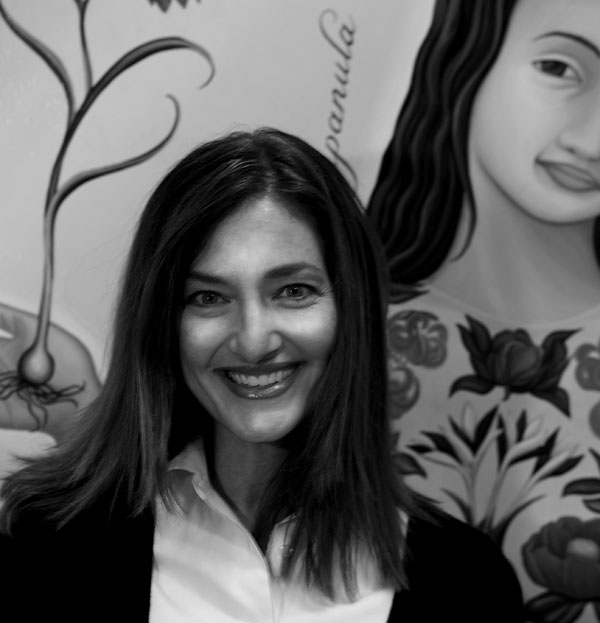
TOXIC FREE TALK RADIO
Celebrating Winter Solstice
Host: Debra Lynn Dadd
Guest: Teresa Villegas
Date of Broadcast: December 4, 2014
DEBRA: Hi, I’m Debra Lynn Dadd and this is Toxic Free Talk Radio where we talk about how to thrive in a toxic world and live toxic-free. It is Thursday, December 4th 2014. Today, we’re going to talk about celebrating winter solstice.
Now, what does this have to do with toxic chemicals? It has to do with toxics because many, many years ago when I first became aware of toxic chemicals and how they were making me sick and I started my recovery from that, one of the things that happened was that I got to Christmas and saw that Christmas was basically a big exchange of toxic products.
It doesn’t have to be that, but at the time, 30 years plus ago when I was first becoming aware of toxic chemicals, that’s exactly what it was (and it still is today for many families) and I couldn’t give or receive toxic Christmas presents.
This started me thinking about the whole idea of commercial consumer-oriented Christmas and looking for something that had more meaning and I found winter solstice.
Now, if you think that winter solstice is like some strange thing that strange people do, actually, for me (and my guest who’s coming up), it’s something that I think that everyone can celebrate regardless of what your religion is or your personal beliefs. It really goes back to having it be a time of reconnecting with nature, making intentions for what is going to happen in the coming year. There’s a whole tradition behind this that is very human and natural. And that’s what we’re going to be talking about today.
And also, a part of it is that eventually, I did end up giving holiday presents again, but I gave presents for winter solstice. They were natural and toxic-free and in alignment with the whole idea of celebrating nature and are part of it at this time of year.
So I’d like to welcome my guest. Her name is Teresa Villegas. She’s the author of a very charming little book called How to Celebrate Winter Solstice. Hi, Teresa.
TERESA VILLEGAS: Hi, thank you for having me.
DEBRA: You’re welcome. So first tell us a little bit about yourself. I actually realized that I didn’t put a bio here and a description on ToxicFreeTalkRadio.com. Tell us just a little bit about yourself and then how you came to be interested in celebrating winter solstice.
TERESA VILLEGAS: Okay. Well, in my history, I’m an artist and an illustrator and a designer. And over the last ten years I was in [inaudible 00:03:58], I’ve taken that role on at pretty much [inaudible 00:04:02] and then illustrating and designing and then painting while I have my children. Of course, anybody who has a family, their career changes. And so mine changed quite a bit.
So now, my career has been influenced of course and inspired by my children. And part of that is getting back to more illustrating for these books. I used to draw a long time ago. So now I’m doing it more now after I’ve had children. I know what they liked and what they looked for and then realizing there’s a need for different types of book.
Anyway, one of the books, this recent book that I’ve illustrated…
DEBRA: Teresa, I need to interrupt you for a second.
TERESA VILLEGAS: Yes.
DEBRA: Could you speak louder or closer because we’re not hearing you very well.
TERESA VILLEGAS: Sure! Oh, I’m sorry. And also, we have a bad connection. We had rains for the first time in a long time. So forgive me for that. I will speak up, yes.
DEBRA: Isn’t that wonderful? But you sound better now, you sound better now, so thank you.
TERESA VILLEGAS: Basically, my kids, we celebrate winter solstice. My kids came home one day from school and they said, “Mom, we’re the only family that celebrates winter solstice. Our teachers would like you to come and talk to our class about it.” And so I said sure.
So for the last few years since I’ve been talking about it to my children’s class, I said, “I should just illustrate this book because they keep asking again and again.” And for the last couple of years, I finally illustrated the book and had it published this year.
Winter solstice has played a part in our family for years. Having this book, other families that we’ve talked with said, “How do you do that? We’d like to take part of that.” And so we just basically told everybody about it and then I illustrated [inaudible 00:05:45].
DEBRA: I’m so happy you did.
TERESA VILLEGAS: Everybody has a little guidebook now.
DEBRA: Yes. I’m so happy you did because I have been celebrating it since 1987, a long time. And when I first started, there was very little information. I mean, there was a lot of information that was more of a religious nature for religions that practice winter solstice, but I didn’t want to practice that religion.
What I wanted to do was find what the essence of winter solstice was. It was like going back in time and saying, “Well, if I didn’t live in this culture, if I lived in a culture where my life was all about living in an ecosystem and living in nature, why would I be celebrating winter solstice and how would I be celebrating winter solstice?” So I was trying to go back to the essence of it, not the way it has come forward.
And I really found when you sent me your book, I said, “Oh, yeah. She’s got it.” We agreed because you’ve stripped away all the other stuff that’s been attached to it over time and really got back to the same essence that I found in it. I think the way that you’ve put together your little book in such an artistic way and such a simple way to understand it really captures the spirit of celebrating the season.
TERESA VILLEGAS: Oh, thank you.
DEBRA: Yeah, you’ve done a really great job. So let’s explain what is a solstice?
TERESA VILLEGAS: Well, the solstice is an actual astronomical event that happens. The sun has reached its furthest point along the elliptical path of the earth. And so that’s why our days are the shortest and our nights are longer.
So as everybody knows in the winter time in the northern hemisphere, our winter times, our nights are darker. That’s why we have so much more light as far as decorations and all that as part of the celebration.
And so in our family, we celebrate that because it is an actual astronomical event. This is something that I’ve celebrated as you did in the eighties when I was in college because of the fact that my friends and I, we wanted to look for something to celebrate as well that wasn’t religious, but yet we made it to the earth and we appreciate that.
I was celebrating that alone. And now, my husband and I celebrated that too. But now that we have the children and our family, we wanted it to be something to celebrate the actual event.
My husband as atheist and I’m Buddhist, we both come from a Christian culture, but we wanted to do something different for our family. And so therefore, my husband was onboard because he said, “Well, that’s an actual event, so that’s something that would be really…” – and it’s really a matter of awe and inspiration from our planet earth and how we celebrate and how we relate to that.
And so that’s where it all started, when our kids were young and we’re forming our own family tradition.
Ever since then, it’s about the sun, about the return of the light and about our connection with earth and about our connection inside of ourselves and what do we want. This is the winter and the earth that is in the winter months, the season of winter and the animals are hibernating and going into a stage of quiet and silence and recollection and thinking about what’s happened in the past year. And at the same time, connecting and thinking about what we want coming in the New Year, in the coming year, the sense of renewal that we talked about in this season.
DEBRA: I think for people in the past, one of the things that struck me as I was doing my research on winter solstice is that virtually every culture around the world, if you go back far enough, has a winter celebration that is about the returning of the light. And the reason that this was so important to people that they had this big celebration about it is because there were no supermarkets then, there were no stores, there was nothing. And so everything that people had then came from their ability to go in their surrounding natural environment, into their ecosystem and gather materials and food.
During the winter season, lots of places were very barren and so the winter solstice, they’ve watched for this moment when the days started becoming longer, when it got to that point where this is the last darkness and now, the days are going to start getting longer. That meant that food supply was going to come back and that was a very, very, very important thing.
We need to go to break. We were going to talk more about this when we come back. You’re listening to Toxic Free Talk Radio. I’m Debra Lynn Dadd. My guest today is Teresa Villegas. She’s the author of How to Celebrate Winter Solstice. Her website is HeartandMindPress.com. where you can go see her book and buy a copy if you’d like. We’d be right back.
DEBRA: You’re listening to Toxic Free Talk Radio. I’m Debra Lynn Dadd. We’re talking about celebrating winter solstice today with my guest, Teresa – Teresa, would you say your last name so we get it right.
TERESA VILLEGAS: Villegas, Villegas. The double L’s are Y. It sounds like a Y, Villegas.
DEBRA: Villegas, yes. She’s the author of – I have the page right here. I want to get the title right too –How to Celebrate Winter Solstice. I guess I wasn’t on the right page because during the break, I was looking up when exactly is winter solstice.
This is a very important thing because if you’re going to celebrate an astronomical event, then you need to have the right moment when it’s occurring. It happens at a moment and our calendar doesn’t line up with what’s happening in the sky.
This was one of the first thing that I had to understand when I started understanding nature, was that things that happen in our industrial world are very standardized, but what’s happening in our nature happens according to nature. And so we celebrate what’s called the first day of winter on December 21st, but winter solstice is neither the first day nor December 21st. Winter solstice marks the middle. In old culture, it’s called mid-Winter and that’s the point where the sun turns around. And this year, it happens to fall on December 21st.
I’m looking at a chart here in my timezone. It happens at 19:03. So that’s in 24-hour timezone. What is it? So if 12 noon is 12, then how many – let’s see. It’s 7:03 p.m. But it will happen at a different time in your time zone because the sun is doing what it’s doing – is this making any sense at all?
TERESA VILLEGAS: Yes, so it’ll be five o’clock in my time, in the Mountain time district.
DEBRA: Right, right. And so you can figure it out there from there. But here’s the thing that I find out and that is – well, I was wondering which one is the longest night? Is it the night before like if it happens at 7:03? Which one’s the longest night?
In trying to answer that question, what I found out was that the word solstice, ‘sun stands still’. And so it’s standing still on the horizon. Stonehenge, if you’re familiar with Stonehenge, it’s built around, so that the sun will line up to shine between two stones when it rises on a winter solstice. That’s part of how they oriented themselves to the year at that time.
But the sun actually rises at that point on the horizon more than one day. I found out that depending where you are on the planet, the longest night can happen – it can be two nights, it could be 16 nights depending on where you are.
And there’s a wonderful website (SEE BELOW). I have to look it up. You can go to ToxicFreeTalkRadio.com and look for this show. I’ll up the link to this website there because I’ve forgotten the name of it, but I’ll find it. It will show you the length of days on any day of the year at any point in the planet. And so you can look up wherever it is that you lived and it will tell you the number of days of the solstice.
One year, my husband made me a candle holder, like a menorah where people in the Jewish culture light a candle for every night of Hannukah. We made a menorah, like a menorah and lit a candle for every longest night of winter solstice. I really liked doing that that year.
TERESA VILLEGAS: Oh, that’s beautiful.
DEBRA: Yeah, because it really – one of the things, one of my favorite parts of winter solstice traditional celebrations is the Yule log, which actually is about carrying the light through the darkest night. And that’s why they stay up all night and that’s why they burn the log and that’s why they have a big log and they decorate it and everything because there’s this point where this is like the darkest, darkest, darkest point in the year and the celebration is for then the people to carry the light of the sun through this darkest point until the sun rises the next morning.
And so for us to then say, “Well, our darkest night is…” – I think it was nine days at that time or something. We lit a candle every night to say, “Okay, this is the darkest time. We’re going to carry the light.” I just think that’s such a beautiful thing to do.
TERESA VILLEGAS: Yes, that’s a really beautiful part. That’s the part in the book that we have. We basically just wrote about how we celebrate it and part of our celebration is candle lighting. Some years, we’ll make homemade candles for the celebration.
DEBRA: Ooh…
TERESA VILLEGAS: I know.
DEBRA: Yeah, yeah, I love doing that. Well, we’re coming up to break again in a couple of minutes, but start to tell us about some of the things that your family does to celebrate (and we’ll talk more when we come back from the break) because I think that people who aren’t familiar with winter solstice think that the celebrations might be very different from Christmas, but in fact, a lot of our Christmas traditions come from winter solstice.
TERESA VILLEGAS: Right, right. In fact, it was the winter solstice. So we do have all of the same things. So when we celebrate, I think it’s more of an attitude that you want to take and more of a metaphorical way that people can look at it who have actually been looking at it before religions had actually taken it and used the symbols and the imagery and all the intentions from the winter solstice from the pagans.
This is not in our book. We’re not any kind of pagan celebration. We’re just using a kind of relationship to our natural earth, honoring the earth and the changes.
So the light do come in with it, with the candles and the light and then using that as a representation of our light within. And our kids, of course, when we light the candles – we have one candle that everybody has [inaudible 00:20:24] and around the table we go.
And this lasts a really short period of time because we have little kids. So they take a little light from their candle, a wick. Actually, it’s like a long match that we have that they light from the big candle and you put on their candle [inaudible 00:20:44].
DEBRA: Oh, how beautiful.
TERESA VILLEGAS: Then they pass it to the next one. Of course, kids, they like anything with fire. So that was one thing that they enjoyed. I mean, they enjoy everything. I asked this morning.
And the other thing is we decorate the tree. We have a tree and so we decorate a tree. We have lights to light up the night and to remind us of our inner light. We also have decorations and we make food, we make special food. Every family has a different food that they like to cook.
DEBRA: And I want to hear all about this after the break.
TERESA VILLEGAS: Okay.
DEBRA: …and I have some things to share too.
TERESA VILLEGAS: Okay.
DEBRA: You’re listening to Toxic Free Talk Radio. I’m Debra Lynn Dadd. And today, we’re talking about celebrating the winter solstice as an alternative to consumer Christmas that doesn’t conflict with anything. It’s just something that everybody can celebrate and still have your normal traditions that you do. So we’ll be right back and give you some more ideas about that.
DEBRA: You’re listening to Toxic Free Talk Radio. I’m Debra Lynn Dadd. My guest today is Teresa Villegas. She’s the author of How to Celebrate Winter Solstice. I cannot tell you how charming this book is. It’s just a delight. The illustrations are just stunningly beautiful.
And I just wanted to share a couple of pages with you here. I’m going to go back to the previous page, hold on. So here’s one of the pages that gives you some suggestions on what you can do on winter solstice. It has awesome snowflakes on it and feet, different feet of family members and their different kinds of shoes in different parts of the world – some very interesting shoes.
Anyway, so it says, “Step outside or take a walk. Experience the longest, darkest night of the year. Feel the crisp air. Hear the quiet sounds of the night. See the light of the moon and the stars. Smell the fragrance of the trees. Taste the falling snow on your tongue. Inhale and breathe the whole experience.” Wow! I think that’s just beautiful.
And then the next page has a beautiful picture of different family members showing the breath – you know how you’d see your breath when it gets so cold. They all have breath coming out and the stars spell out ‘silent night’.
And then there’s a little tag on the side that says, “Do you know that the word ‘silent’ has the same letters as ‘listen’.” The whole book is like this. It just is so peaceful. It’s a peaceful book. It’s like it just feels like you feel on winter solstice. I just think that you just captured that so well.
TERESA VILLEGAS: Thank you. Well, what I wanted to mention is placing the emphasis on winter solstice as an emphasis on nature and science and personal growth.
DEBRA: Yes.
TERESA VILLEGAS: …and the light and the connection that between the earth and us and what’s happening at the same time simultaneously, looking to our outer world and looking to our inner world.
DEBRA: Yes, exactly. It’s like at that time, all of life on the planet is down under ground, that seed. It’s about seeds and that we can also go within and be looking at what’s going on with ourselves and planting our own seeds of what we want to be creating in the coming year. It just all fits together. That’s exactly the celebration. And it’s a celebration that people had been doing around the world in many cultures since – I don’t even know how long. It’s just an ancient, ancient thing to do.
One thing I wanted to talk about was the Christmas tree or the solstice tree. I call mine the solstice tree and about the fact that it’s an evergreen. There’s a significance of decking the halls – actually, that song, “deck the halls with bells and holly, tra-la-la-la-la-la, la-la-la-la,” that solstice song, all the things about decorating your house with greens, anything that has to do with decorating your house with evergreens, the significance behind that is that the whole celebration is about carrying light through the barren winter.
And so as opposed to a deciduous tree where it just has bare branches, the evergreens carry life through their eternal. And so just like burning the Yule log through the night, decorating your house with evergreens says, “I’m agreeing with carrying life through until the sun comes back again.” I just think that’s such a wonderful…
TERESA VILLEGAS: I think that’s wonderful.
DEBRA: Yeah…
TERESA VILLEGAS: That’s so beautiful. I didn’t know that that song was particularly for winter solstice though.
DEBRA: It is! It is! It’s totally about that. The celebrations really are that at winter solstice, people come together and they have a festival and they burn fires and they have a feast and they wish each other well. The Wassail Song like, “Here we come a-wassailing among the leaves so green.” A-waissal is a bowl of punch. And the word ‘wassail’ is the toast. It means “have health.”
And then after the winter solstice party, they would take whatever was left of the punch and they would take it outside the following day and dump it on the apple trees. It’s actually called ‘wassailing the tree’. They have songs that people used to sing. These are some of my favorite songs of all times. They’re songs that people would sing to the trees to tell them to bear.
TERESA VILLEGAS: Wow!
DEBRA: Yes! So there’s this huge thing – and this is just in cultures I saw all over the world. There’s this huge thing about at this time of year, people praying or intending (or whatever it is that they did), participating in the growth of nature, that they felt it was their responsibility.
The aborigines in Australia, they do this thing where they walk around the borders of their land. I forgot, there’s a name for this. They walk around the borders of their land on New Year’s Day I think. So it’s the same kind of thing and they sing their land into existence. They sing it together.
TERESA VILLEGAS: Ah, that’s beautiful.
DEBRA: The tribes sings their land into existence. And these are the traditions that we’re not doing anymore.
TERESA VILLEGAS: Right! In fact, I was speaking with a woman a couple of weeks ago and she was from the Middle Eastern countries. She said, “Oh, the pomegranate tree is what we really honor and celebrate quite a bit during this time of year.” The pomegranate, of course, is a fruit that has many implications of life because of all the seeds within, life and the metaphor of this pomegranate and all of that.
DEBRA: Right! And it’s about abundance.
TERESA VILLEGAS: So that was really nice to hear. I love hearing these stories and how everybody celebrates it differently. And that’s what’s so wonderful about it because every family can adapt it to what they need.
DEBRA: That’s exactly it.
TERESA VILLEGAS: I mean, Bernard and I, my husband and I, we celebrated before we had kids. We didn’t need to have so much of the gifts or the tree. Because we just had each other, we celebrate. But with the kids, we want to place the emphasis on the tree and nature and getting back in touch with nature. That’s why we’d go for a hike. We’d go for a night walk. We experience the nature in this time of the season and the light and the stars.
And something I just heard the other day was that when the earth is on the axle that gives us the seasons, the 23.5° axle tilt that gives us the season of our earth, actually the top of it points to the star Polaris. So the axial tilt is always pointing to the star Polaris. I didn’t even know that. Have you heard that before?
DEBRA: Yes, I did. That’s the northern star. That’s the northern star.
TERESA VILLEGAS: Yeah. Well, thank you very much.
DEBRA: That’s the line. And so that star, that one star is always on the same place. And if I’m understanding this correctly (an astronomer can write in and correct me if I’m not), if I’m understanding it correctly, it’s all the stars in the sky revolve around that point.
TERESA VILLEGAS: Right! I heard that, but I made the connection. And so I was actually working on this book about the tilt and this and that and winter solstice. I’m like, “Oh, my gosh! Now it all comes together for me.”
DEBRA: It all makes sense, yeah. Yeah! We need to go to break again. You’re listening to Toxic Free Talk Radio. I’m Debra Lynn Dadd. I’m here with Teresa Villegas, author of How to Celebrate Winter Solstice. We’re talking about how to celebrate winter solstice. We’ll be right back.
DEBRA: You’re listening to Toxic Free Talk Radio. I’m Debra Lynn Dadd. My guest today is Teresa Villegas. She’s the author of How to Celebrate Winter Solstice. You can go to her website, which is HeartandMindPress.com. and get the book. It’s so charming. I’m looking at another page here where she’s talking about staying up late and being together and playing and having fun. I know I have with my friends stayed up all night. We sing winter solstice songs, which I’ve written the words to and play games and talk about the work we’ll be doing next year and read winter solstice stories and eat food.
Teresa, in her book, she says, “At the first sign of the morning’s light as the new sun rises in the east, it’s time to give and receive gifts.” She’s got this wonderful drawing of a family, each one snuggled in their sleeping bag all sleeping in a circle around the solstice tree with the presents underneath and snowflake lights on the tree. When I look at this picture, I just thought about the camaraderie and the closeness and the togetherness of a family and how that same togetherness exists between us and nature if we would just participate in it.
TERESA VILLEGAS: Right, right. And we actually do that. We get our sleeping bags. We all put it around the tree. And that’s one of the things I ask my kids as I was going to do this interview. Every year, we’re always asking, we say, “What’s your favorite part? What’s your favorite part?” and they said, “Staying up all night.”
And when I go to the schools and talk to the schools about this, that’s when all of the kids say, “Oh, I wish we could stay up all night long.” But of course, you know, the kids crash pretty early.
DEBRA: Yeah, they do. But it’s just this idea that they don’t have to go to bed.
TERESA VILLEGAS: Right! I think you’re right, you’re right, you’re right. It is fun. And it’s really fun to talk about the things that happened in the past and what we want to change in the year. We try to turn off all of the electronics. And then we play games and just play more games and hang out and converse and talk.
DEBRA: Right! And it’s a good time to do that. It’s a really good time to reconnect with each other on a human level.
TERESA VILLEGAS: Right!
DEBRA: Another point I wanted to make was that for me, it was really important that I create my own celebration. Part of that was not to just repeat what somebody has created, but to use my own creativity.
When I thought about that, I thought, well, there was a point in time when people were developing the idea of celebrating winter solstice and they created a celebration that was about their place and time. And so I wanted to create a celebration that was about me and my relationship to nature in this place and time. I think that that’s part of it, to really be free to take whatever traditions you want to take and not use any traditions you don’t want to take. It’s really about you and your relationship with nature and marking that time when life is starting again and be able to say, “How do I want my life to start again?”
Can you tell I love this holiday?
TERESA VILLEGAS: I do too. We do too. You told me that you would write things down?
DEBRA: Yes. Yes, I do. I do. I write things down all the time, but especially on winter solstice. It’s a really good time to have that quiet time that night when you’re staying up all night to have some quiet time and take stock of your life and envision how you want your life to be different and if there’s something that you’re wishing for like if you’re wanting a new boyfriend or something. This is really the time to say, “Okay, this is what I want” because what we think about, what we say we want are the things that we get. And if your life isn’t going the way you want it to go, this is a time, a really good time to just focus on that and draw pictures or write it down or whatever it is that you do.
I’m interesting in what you all eat. Tell us more about what are your winter solstice foods.
TERESA VILLEGAS: Well, we like to cook a lot in our family. My husband likes to cook. For the sweets, he likes to make the cinnamon rolls for the morning. The kids get involved in that. And then also, in the evening, we like to have – I guess he spent a lot of time in Europe. He said that they had a lot of seafood. I guess it was in Italy he’s had a lot of seafood.
DEBRA: Oh, yeah. They have a thing where it’s like the seven seafoods or something.
TERESA VILLEGAS: Oh, right.
DEBRA: Yeah.
TERESA VILLEGAS: So we kind of did our little southwestern pozole, seafood pozole. So that’s a big thing where we have green chili and then we have shrimp and we have scallops. So we make a green seafood pozole. Typically, pozole is made from red chillis and pork. But we use green chillis and seafood.
DEBRA: Yeah!
TERESA VILLEGAS: So that was how we adapted it for our family. What about you?
DEBRA: Well, I’m always looking at what other foods of the season. So one thing that I really like to make is fruitcake. People are going to roll their eyes and say, “Oh, that tough, sugary thing?” Well, no. My fruitcake is not like that because I actually make cake with natural sweeteners and almond flour and things like that. So it’s gluten-free and it’s sugar free.
And then I take dried fruits, organic dried fruits instead of those sugary candy fruits. So it’s like a fruit in that cake. It’s really delicious.
I’ll make it in November. I put a little brandy and stuff on it. The alcohol evaporates, but you still have that whole – it’s like this whole ritual of making the cake and the approach to winter solstice. And then you eat it.
And then I make cookies. I always make some kind of gluten-free cookies in star shapes and I go a lot of star cookies. And then we just kind of have whatever wintery foods we want to eat that particular night.
And over the years, I’ve just developed a lot of naturally sweet recipes of things that are close to the kinds of things that you might eat at Christmas time like fudge and cookies and stuff like that. So we have those, but we have them in their natural, healthy state.
TERESA VILLEGAS: Oh, that sounds delicious. I mean, I’ve never said that about one of those fruitcakes, “Oh, that sounds delicious,” but it does sound delicious. I mean, you’re right!
DEBRA: Well, neither did I.
TERESA VILLEGAS: That icky stuff is just disgusting, that sticky fake fruit. I guess it’s not fake.
DEBRA: It is. It’s candied fruit, it’s sugared fruit. [inaudible 00:46:22]
TERESA VILLEGAS: Yeah, yeah, [inaudible 00:46:22].
DEBRA: Yeah, yeah. But mine is very good. It’s very, very good. So it’s just I loved hearing about your family cooking together. And so again, a thing about winter solstice is that there’s an ancient tradition called ‘A Day Out of Time’ I think it’s called where the year actually, they only had 364 days. The 365th day was out of time because that was the winter solstice. It was out of time.
And so it’s a good day to just say, “Well, I’m going to take this day off from my normal life and do something like cook a wonderful dinner and spend time with my family and take time for myself.” And so for me, that’s what winter solstice is about. It’s just like, “I’m not doing my normal life. It’s different. It’s a day out of time.”
TERESA VILLEGAS: Right! And that’s what makes it nice. You can do something exceptionally different than the way everybody else is doing. That’s another reason why winter solstice is just so particular to your family.
We do like to go for a hike. And there’s one particular hike that we do only on winter solstice, so that’s kind of nice too, out of the ordinary.
DEBRA: That’s nice. Wow! I like that. I love everything you said. So we only have less than two minutes left, is there anything quick you want to say that we haven’t talked about?
TERESA VILLEGAS: Just happy winter solstice however you celebrate the holidays. We send you love. Have a wonderful holidays!
DEBRA: Thank you. You too. I will. I’m going to put more information. Each one of the shows has its own post on the archive blog. I’ll put more information about winter solstice on the page for this show.
TERESA VILLEGAS: Maybe one of your recipes.
DEBRA: Oh, I could probably put a recipe, yes.
TERESA VILLEGAS: Yes! Your fruitcake.
DEBRA: You know, we have transcripts. So there’s going to be a transcript within the beginning of next week. I’ll put a recipe. Yeah, I’ll put a link to the website where you can find out how many days of winter solstice there is. I’ll just kind of fill up that page with some interesting stuff.
TERESA VILLEGAS: Oh, thank you.
DEBRA: Yeah. We’ll just have a virtual celebration like that. Again, Teresa’s website is HeartandMindPress.com. You can go there. She has a blog. She’s got pictures of her family celebrating winter solstice. You can order your books there.
And she also has winter solstice cards that you can send to your friends. They’re very charming. Whether you’re new to winter solstice or you’ve been celebrating winter solstice for a long time, it’s just a place where you can go and just find out more about winter solstice, being inspire and introduce your friends and family to winter solstice with a very lovely book that is not religion-oriented. It’s only nature-oriented.
So, thank you so much, Teresa.
TERESA VILLEGAS: Thank you.
DEBRA: You have a happy winter solstice. I’m sure you will.
TERESA VILLEGAS: Thank you very much.
DEBRA: You’re welcome. I’m Debra Lynn Dadd. You’re listening to Toxic Free Talk Radio. You can find out more by going to ToxicFreeTalkRadio.com. Have a great holiday season and be well.
Solstice Cake

I have two girlfriends with whom I celebrate the solstices and equinoxes. We usually get together and eat seasonal foods, some from our gardens depending on time of year, and we do various things appropriate to celebrating the season.
This year we had our gathering on Solstice eve, the night before Solstice. Linda read something about having a birthday party for the Sun, to bake a cake with an image of a Sun on it, and sing Happy Birthday to welcome the rebirth of the Sun in the new year. She asked me to bake and decorate a cake for the occasion.
I thought about this cake for days in advance and considered many different options. What cake to bake? How do I get an image of the sun on top? I considered using yellow icing to pipe or paint a sun, and creating a sun with careful placement of golden raisins. But everything I thought of didn’t seem quite right.
Then on the very day that the cake was needed, the perfect cake just came to me. I knew exactly what to do, what elements to bring together that would be exactly right in every way. I made a gluten-free almond cake, topped it with mascarpone cheese* instead of sugary frosting, then “painted” a sun on top with ginger-orange marmalade fruit spread (sweetened with grape juice concentrate). The translucent marmalade caught the light and made the Sun “shine”. For a final festive garnish, I sprinkled the top with curls of lemon zest, from a lemon I picked off the tree in my backyard. I gave the Sun eight points with a beeswax candle at each point to represent infinity and the infinite continuation of the return of the Sun year after year.
It was a truly stunningly beautiful cake, and amazingly delicious too. With the fresh lemon zest, the cake just smelled like winter in Florida, where citrus trees are everywhere, in almost every backyard.
I was happy that this cake captured the spirit of the Solstice, in the place where I live. Everyone loved it.
Here’s the recipe for my cake.
SOLSTICE CAKE
makes one 9-inch layer, 8 servings
- 6 tablespoons butter, at room temperature
- 3/4 cup sifted powdered unrefined cane sugar (sold as “organic” powdered sugar)
- 4 large eggs
- 1 teaspoon almond extract
- 1 1/2 cups almond flour (or almonds processed to a fine powder)
- 1/4 teaspoon salt
- 8 ounces mascarpone cheese, at room temperature
- 1/2 jar ginger-orange marmalade fruit spread (or plain orange marmalade)
the zest of one lemon
- Preheat the oven to 325 degrees F.
- Line a 9-inch round cake pan with a piece of parchment paper.
- Whip butter in a large bowl with an electric mixer until smooth and creamy, then add powdered sugar and continue to beat until well incorporated.
- Add the eggs, one at a time, beating and scraping the sides of the bowl after each addition.
- Add the almond extract.
- Stir the almond flour into the batter along with the salt.
- Pour batter into the pan and bake 35 to 40 minutes, or until the cake is lightly browned on top and a toothpick inserted into the center comes out clean.
- Let the cake cool in the pan for 10 minutes.
- Invert cake onto a cooling rack and allow it to cool completely.
- Spread the soft mascarpone cheese onto the cooled cake. Then put the cake in the refrigerator for about an hour to allow the mascarpone to firm up.
- To make the sun, put a heaping tablespoon of marmalade in the center of the cake. Then fill a teaspoon with marmalade. Starting from the center circle, place the marmalage in the teaspoon on the cake, and pull the marmalage out towards the edge, making the sunbeam narrower and narrower as you go. I starting pulling with the back of a teaspoon and then tipped the spoon as I want to make the line narrower.
- Top with lemon zest curls and a candle at each point.
* Mascaropone is a soft Italian cheese similar to our cream cheese but more delicate. It is usually sold in gourmet supermarkets and natural food stores, or in the speciality cheese section of supermarkets. If you can’t find it where you live, you can use whipped cream cheese or buttercream frosting.
_____________________________________________________________________________________
Sunshine Through the Year
I “accidentally” found this very cool website a couple of years ago and it’s one of my favorites.
Gaisma.com has very comprehensive data about the amount of sunshine for every place in the world. “Gaisma” is a Latvian word, meaning “light”.
Why would you want to know this? For gardening, for calculating potential solar energy, but for me, it very clearly shows the increase and decrease of day length (making it easy to find the longest days and longest nights), in beautiful graphs.
Here is my graph for Clearwater, Florida, for today, 5 January 2013.

Today is the day after the Summer Solstice, the so-called “longest day”. See, the day length is 13 hours 55 minutes. But tomorrow is 13 hours 55 minutes also, and if you could scroll this back, you would see that the prior three days were 13 hours 55 minutes. It takes a week here for the daylight to be one minute less.
Then this information is placed on a beautiful graph that shows the hours of sunlight over the course of the year. There’s a grey line near the middle that is today.

Then there is the sun path diagram. The sun path is the seasonal-and-hourly positional changes of the sun as the Earth rotates and orbits around the sun, so you can see where the sun will be at different times of year. This is useful to orient a house or garden to the sun. You can print your sun path diagram on an overhead transparency or tracing paper and overlay it on your house or garden plans.

In addition there is all kinds of meteoroligical information for your place like temperature, wind speed, and precipitation. And if you don’t know where you are in the world, it tells your longitude and latitude, too, local time zone and even your altitude.
It’s a great tool to play with. I had fun looking at the sunshine hours graph for different places in the world. Compare the graph for your location with my Clearwater graph. Quite a difference in the sun patterns!
Even if you have no other use for this, go find your location and see what your local sun patterns are. And next time a solstice nears, here’s where you can find your own “longest day” and “longest night.”


